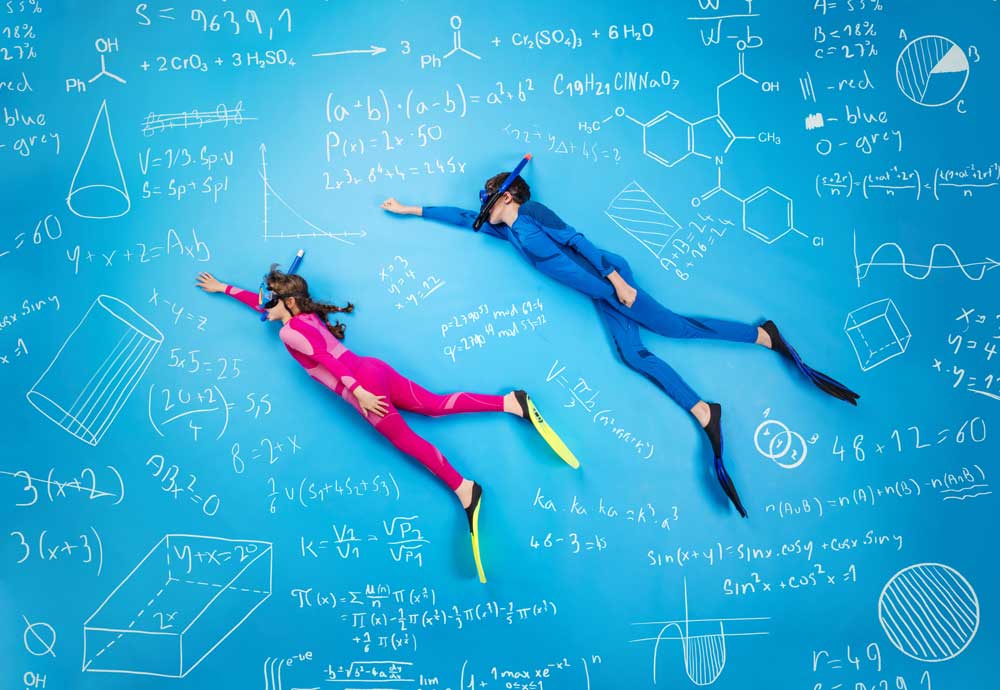Both physical and mental stimulation are required for young school-going girls looking for holistic development. Combining STEM with sports classes is ideal to ensure both goals are met simultaneously. What’s more, you can use STEM-based theories in real-world scenarios, so that girls are able to see firsthand the use of these applications. Traditionally, both sports and STEM have been seen as male-dominated fields, so it is doubly important to ensure girls are offered the best of integrated learning.
Here are some ways in which sports can be used to further the understanding of STEM concepts:
Measurement & Physics
Dr Tapasyaa Sen, a mathematics college lecturer based in Chennai says, ‘Girls in lower classes are typically just learning the foundational mathematical concepts of distance, height and measurement. When you encourage them to jump higher or further, you are not just improving their performance and skill, but also teaching them how larger and smaller numbers compare. Metrics are introduced as well as the idea of decimals, which can help them up their maths game. Subconsciously, they will also absorb some physics concepts such as force and acceleration. When used to their full potential and maximised, these factors can help boost performance. Speed and momentum are important factorS for the long jump, but power is the driving force behind the high jump. Children will soon be able to make these distinctions, which make the study of physics easier and also more fun!’
Environment & Weather
Sports helps girls develop a deeper understanding of their surroundings, and how it impacts their performance. For example, winds can impact which way a tennis ball or shuttle cork goes, and this is not always in the athlete’s control. It can also affect niche sports such as sailing, which rely on the wind for optimised performance. Temperature is another parameter to be considered. If one is performing in extreme heat or extreme cold, it is less likely to be comfortable. Altitude and oxygen supply can also impact player performance. Finally, there is an understanding of the terrain, of grass versus soil, or an incline versus a flat field. Playing sports regularly can enable girls to understand a wide variety of climatic patterns such as the seasons, temperatures, humidity, and even topography.

Biological Factors
Sports offers girls an understanding of how their bodies work. Even those in elementary classes can be involved in simple exercises such as analysing the heart rate before and after exercise, and noting the difference in speed and beats per minute. Those in higher classes can take the learning up a notch higher. They will be able to glean their physiology, by learning concepts such as muscle groups, metabolism, endurance, and energy. Another key benefit is understanding their body’s nutritional requirements, and breaking food down into groups such as proteins, fats, vitamins, and so on. When girls play sports, it helps them personally keep in shape, and also understand the overall requirements of the body. How much should they train? Do genetic factors impact athletic performance? How much fluid intake do they need after playing? Sports provide an overall perspective of the body’s biology.
Engineering & Design
Dr Tapasyaa says, ‘Both sports and engineering are ‘design thinking’ fields, which involve creativity, problem-solving and thinking out of the box. When girls play sports, they also learn about ancillary concepts such as the tools and materials involved in sporting accessories. A tennis ball is entirely different from one used in soccer. What are the ergonomic differences between the two? Protective gear is designed to prevent injury. How can it be made more foolproof? Clothes and shoes can enhance performance. What goes into designing them for optimum results? Girls who play sports will be natural engineers for two reasons. They’re always willing to improvise and do what it takes to meet the end goal. Secondly, they have access to equipment and understand how its design and engineering can impact performance.’
Virtual Reality
As much as sports is about the great, wide outdoors, successful teams and players have also embraced technology to enhance their performance. Sports can teach you the applications of virtual reality, first-hand. You can collect data such as speed and motion, and then analyse it to identify the athlete’s weaknesses and strengths. Under the guidance of an able coach, you can work on improving your performance and avoiding injury. You can also understand the psychological benefits and uses of VR, such as spatial awareness, simulating real games with crowds, and so on.
An interdisciplinary approach that combines STEM and sports may seem unusual, but it provides a positive learning environment on both fronts. This can help girls develop skills outside the classroom that they can apply in a real-time scenario. It can also cultivate problem-solving and critical thinking skills, along with being a fun and enjoyable experience.